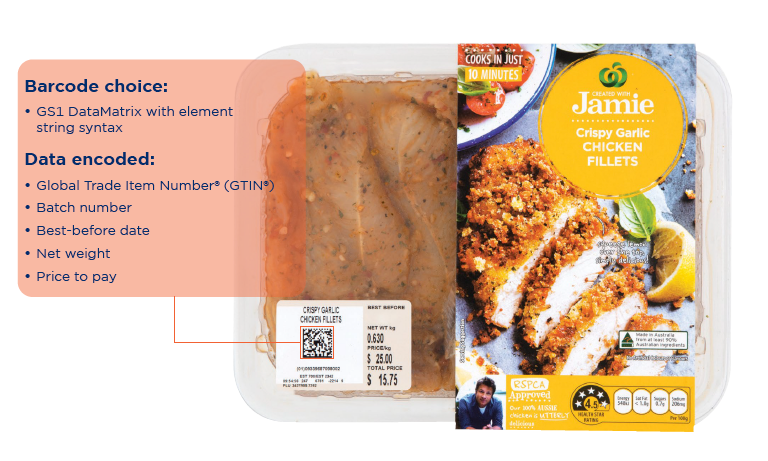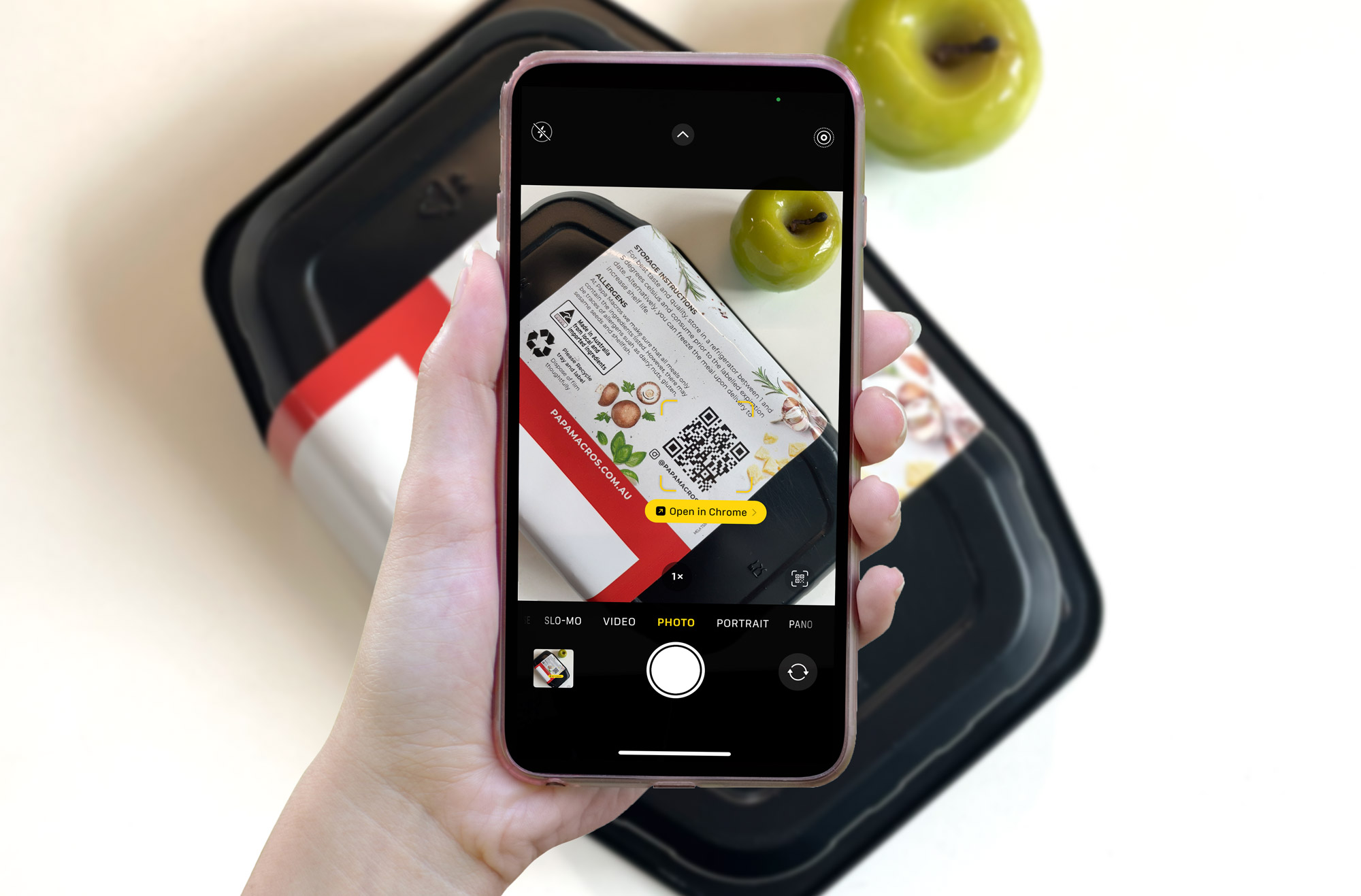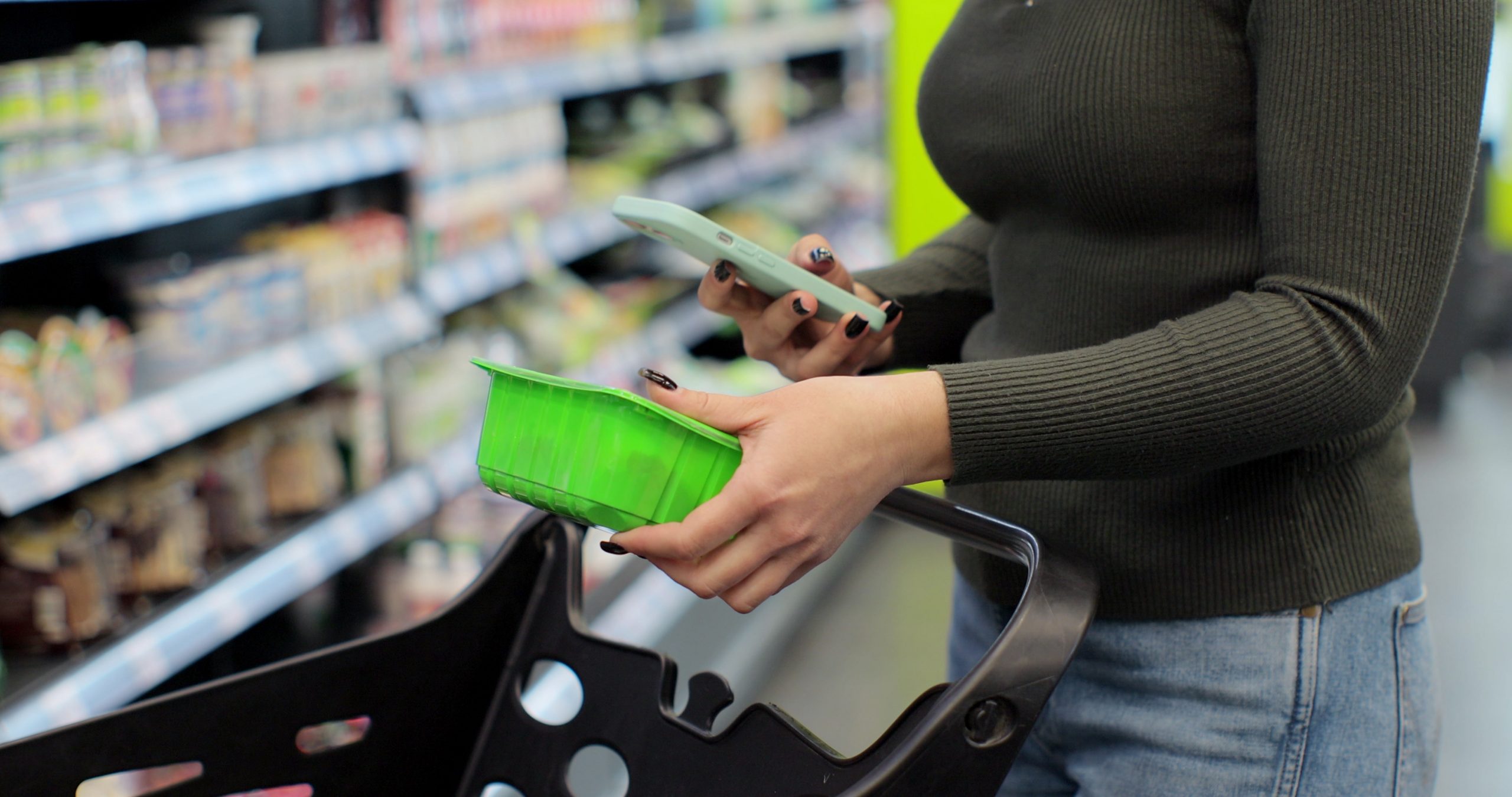If there is one good thing to come out of pandemic, it’s that people are now quite comfortable with QR-codes. Adding a QR-code to your product’s box or label packaging has huge potential. QR-codes can link to marketing material such as product information, how-to videos, recipes etc – the list is endless. This opens a valuable communication channel with consumers. The downside is that it takes up valuable space on a pack. So, what if it could double as the barcode? A QR-code barcode.
Barcodes on packaging
You may not know this, but barcodes have been around since the 1970s. A product barcode encodes a machine-scannable set of lines with the product’s unique product identification number. This number is the Global Trade Item Number, GTIN, issued by GS1. GS1 is the only global authorised provider of authentic and unique numbers.
Barcode numbers
In Australia, GTINs are issued by GS1 Australia. GTINs are commonly referred to as APNs (Australian Product Number). We recommend joining GS1 and obtaining these directly rather than purchasing from a reseller. Purchasing through a third party may lead to unauthorised use of a particular GTIN. It is a costly exercise to rectify such a breach.
A GTIN or barcode number comprises of the company prefix issued by GS1 and your unique product number. You assign a unique product number to each SKU from within your block of allocated numbers from GS1. A standard GTIN is a 12-digit number plus a calculated check digit. Hence, the cost for GTINs depends on the total number of GTINs your business requires. This is because you pay more to have a shorter company prefix and larger chunk of the available unique numbers. Getting the numbering correct across your product range will help maintain accurate segmented data across product types and categories.
GS1 complaint barcodes
The barcode itself is a black and white graphic generated by specific software. The software creates a unique 1-dimensional combination of vertical bars. Mela Creative generates these for our clients to use on their packaging.
There are legalities around the size and placement of barcodes for packaging to be “GS1 complaint”. Major retailers will only accept packaging with compliant barcodes. These retailers include online stores such as Amazon. So, even if you just want to list your products on an online store, you cannot bypass using a barcode. The upside is that you can check barcodes against GS1 database. This will verify the authenticity of a product thereby protecting both seller and brand owner.
QR-code barcodes of the future
To date, barcodes have simply been 1D – a linear representation of a particular number. However, we are progressing toward 2D barcodes. 2D barcodes include the data matrix and the QR-code. These can hold a large amount of data in a small amount of space. This is revolutionary for packaging design!
QR-code barcodes free up precious pack space by combining product identification with product information in a single symbol. QR-code barcodes can also address supply chain issues and traceability. Unfortunately, these are not yet mainstream as this will require updating retail POS systems globally. But we are heading in the right direction.
Currently, GS1 Australia is working with retailers and suppliers to fast-track the implementation of 2D barcode technology. QR-code barcode strategies will allow for both consumer engagement and supply chain goals.
The advantages of QR-code barcodes
- smarter – more date for all stakeholders eg expiration, recalls, consumer engagement
- faster – better read rate, so less delays at check-out
- smaller – occupy less space than traditional barcodes, so free up on-pack space

Image Source: GS1 Australia
Woolworths is adopting 2D barcodes on their fresh food items with fresh meat and poultry already being rolled out. The new barcodes are a Data Matrix symbol that encodes product data. Currently, this includes GTIN, batch number, best-before date, net weight and price to pay. They have seen improved food safety and have reduced food waste by up to 40%. That’s because the 2D barcodes can be used in system-driven solutions to manage inventory. This includes automatically applying mark-downs when products approach expiration and stop unsafe product being sold at the check-out.
The future will see consumers scanning the QR-code barcode with their smartphone to instantly engage with the brand digitally. Engagement will not just be through brand marketing experiences, but for peace of mind about the product, as well.
Would you like to work with brand designers who know packaging design?
We’d love to talk about how we can help. Contact us now.





